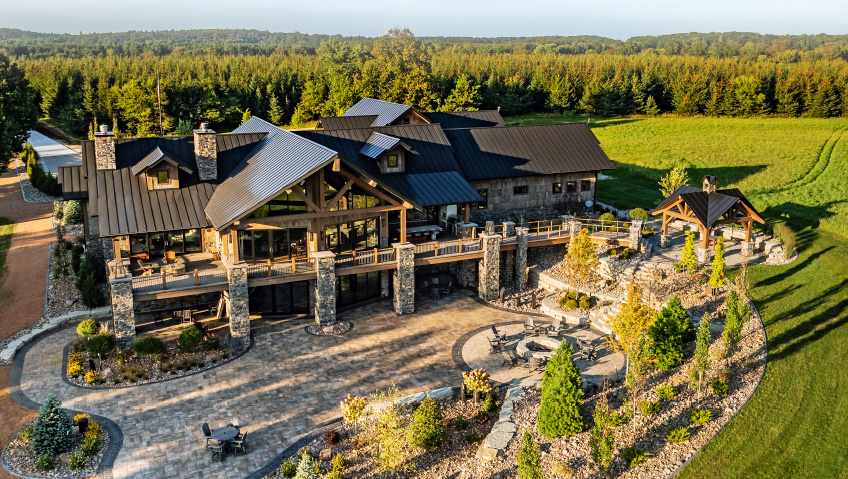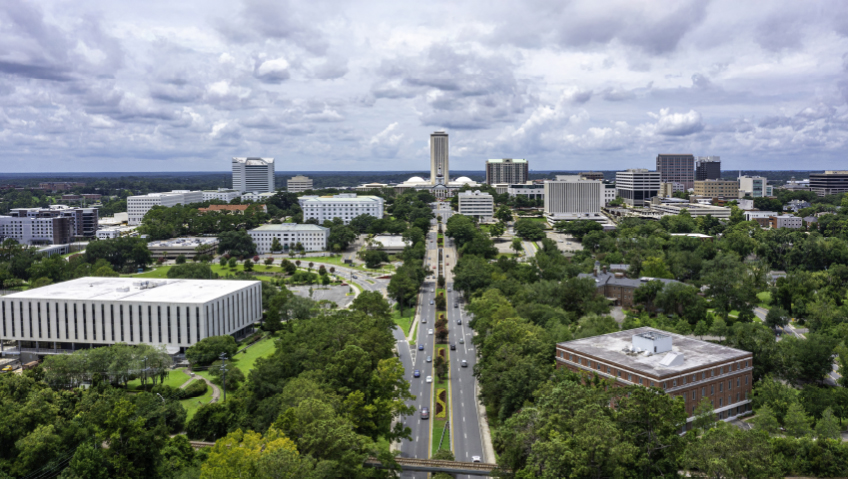Burnett is a small county located in the northwestern part of the state of Wisconsin, only an hour and a half away from the Twin Cities area of Minneapolis-Saint Paul in Minnesota. The population of the county currently sits at around 18,000 in the summer, though that number can jump dramatically—even double—thanks to recreation and tourism.
The county’s economic development director, Richard Hartmann, says that Burnett has an advantage over other counties that are centralized in the state, which simply can’t match its unique attributes. Burnett County, he says, has so much to offer in the way of nature and its wonders: its scenery, lakes, rivers, streams, and trails.
Nature within reach
The western border of the county is home to the St. Croix National Scenic Riverway, a designated national park area. This is the closest such expanse of fresh air and clean water to the Twin Cities metro area, with an abundance of multi-use trails for hiking, biking, and recreational vehicles, some of the biggest attractions for tourists. There is also much community pride in the area among residents, with four different communities in the county putting on major festivals in a typical year. These include celebrations like Jordan Buck Day, which commemorates the catching of the largest typical whitetail within the contiguous 48 states, a record that has stood since 1914.
Hartmann has worked in economic development and with Burnett County on and off for around 50 years now, working part-time in his current position for about six years. He also oversees its nonprofit development corporation, the Burnett County Development Association (BCDA), which oversees the retention and expansion of businesses using resources available through the county, state, and federal government.
Hartmann says that his volunteer board and various organizations in the county, like the BCDA and the Burnett County Tourism Coalition, give him a lot of help and ideas on how best to accomplish projects within the modest available budget.
A need for housing
Burnett County has three major areas of focus for its ongoing development to which this budget is most often allocated. The first is housing, and specifically addressing the lack of it for incoming and existing residents. The county offers a wealth of great employment opportunities, but people are having a hard time finding places to live, at least in homes that are close by and don’t incur an 80 to 90-mile round-trip drive.
As it has everywhere, the cost of housing has jumped dramatically, with the average cost of a three-bedroom single-family home sitting at about $320,000. Hartmann explains that approximately 65 percent of properties in the county are owned by people who don’t live there all year-round, meaning that the burdens of property taxes and population increase fall increasingly on long-term residents. To meet this specific hurdle, the county has developed a short-term rental lodging tax situation, with seven of the 24 state municipalities having signed onto the program.
The county also has a current shortage of around 250 houses, as it works to provide more homes at a reduced cost. Hartmann explains that the county’s housing committee, a collaboration of leaders in government, private business, and finance, meets monthly with the priority to develop more housing in one of the county’s three villages/municipalities: Grantsburg, Siren, and Webster. Hartmann says that he and the county will work with its three villages to develop their infrastructure and find developers who can create housing at the right price.
Each of these areas has its own water and sewer works as well as the capacity for expansion, and Hartmann says that if the cost of utilities, infrastructure, water, electricity, and such can be offset, the cost of housing development can also be reduced. Burnett County recently completed a small area plan for a subdivision in lower-market municipalities, with additional scenarios to develop single-family workforce housing, senior housing, duplexes, and even a quadruplex. The subdivision is located at the end of Main Street, which is close enough for residents to walk to both the commercial area and the nearby Gandy Dancer Trail, making it an ideal place for anyone to put down roots.
The county’s population has recently increased by around three percent, especially with people between 55 and 70 years old. Hartmann says that this makes the area something of a retirement community, so the county is trying to tap into the town’s resources, as well as the retirees themselves, so that all can benefit from their talent and experiences through opportunities like volunteering, the service industry, and school and government operations.
The county will also work hard to maintain Burnett’s natural character, meaning its forests, lakes, streams, and trail systems. This will entail the continual improvement of accessibility, both through roads and working with broadband providers to improve internet connection for operations like schools, telemedicine, and local businesses. “We want to maintain this environment,” says Hartmann.
Welcoming people
The second area of focus for Burnett County is talent attraction and retention, finding people who want to relocate to the area.
The county receives a lot of business from sectors like tourism, hospitality, and agriculture, some of which are among its largest employers. It also works with individual businesses, helping them put their best foot forward to both customers and the workforce in terms of advertising their operations.
“Small businesses are the backbone of what we’re doing here,” says Hartmann, with around 20 small to medium-sized manufacturers contributing to the county’s business landscape.
Wages in the county are competitive to a point, with a lot of manufacturers in Burnett offering bonuses and benefits like insurance early in the employment process to entice new workers. The area also has ample room for expansion, with an industrial park in Grantsburg having recently acquired an additional 28 acres that is currently under development. The Siren community and industrial park is similarly poised for expansion in its manufacturing and service division jobs.
The third and final area of focus for the county is an increase in childcare access and affordability. With the development of adequate childcare for current and incoming families, the number of working people in the county can be boosted. Hartmann says that the county is seeking more data to see what is needed in this area—and how to execute it well—as an influx of families will help to boost the schools and local workforce.
A winning lifestyle
Although Burnett may not have all the offerings of a large urban center, it benefits from being close enough for residents to visit the Twin Cities area and still be home in good time without dealing with the problems those larger markets can bring.
The county is home to solid public schools and, according to Hartmann, is a safe and welcoming place to raise a family.
“We have a really good lifestyle here,” he shares. The benefits, advantages, and charm of Burnett County are obvious to anyone who visits, and they are there to be shared with anyone thinking of making their home among its trees and lakes.






